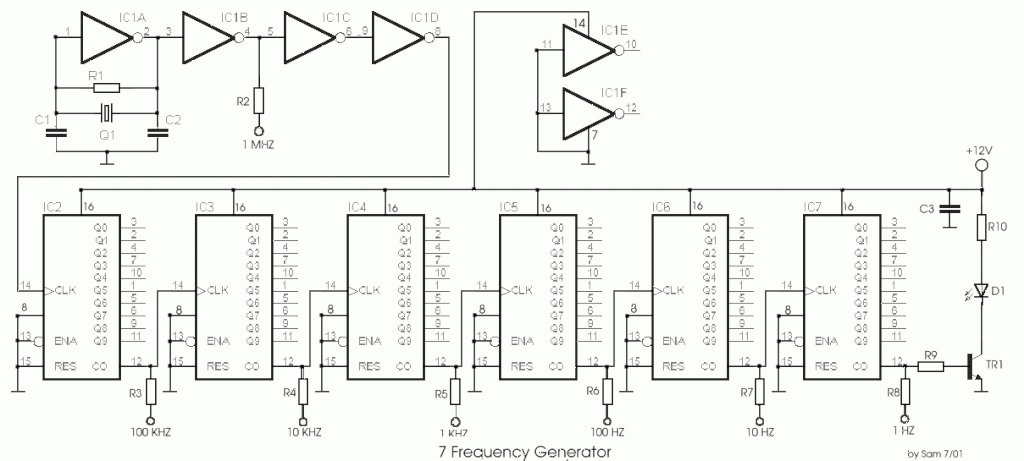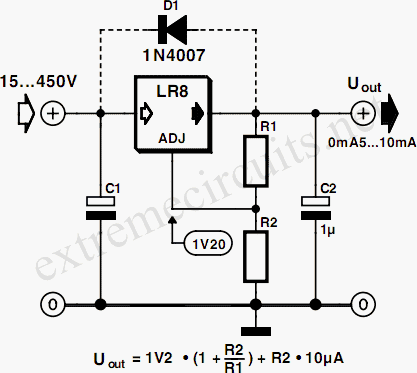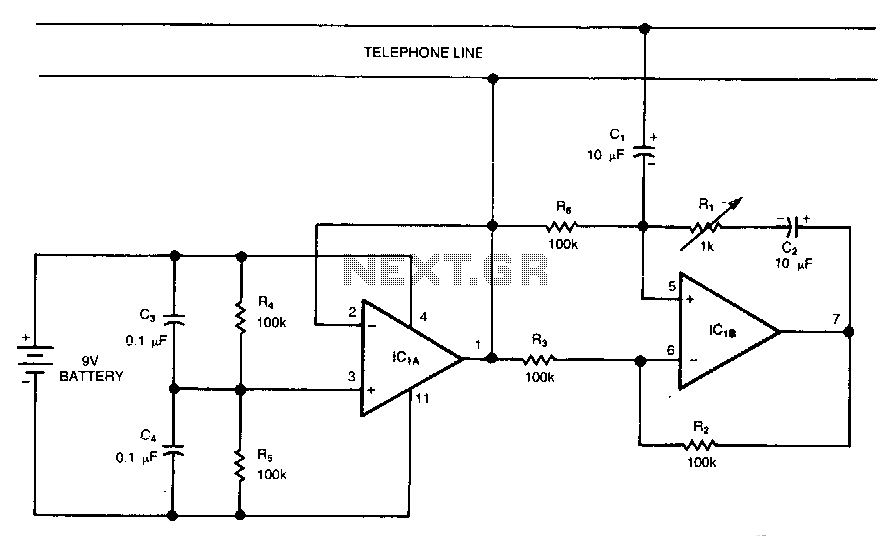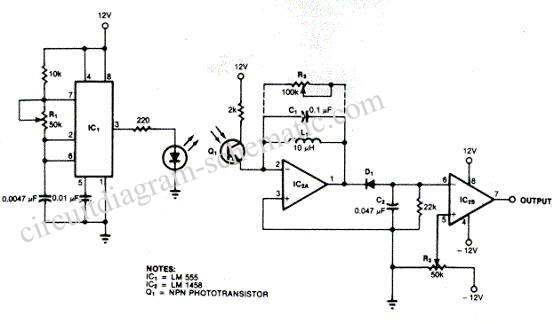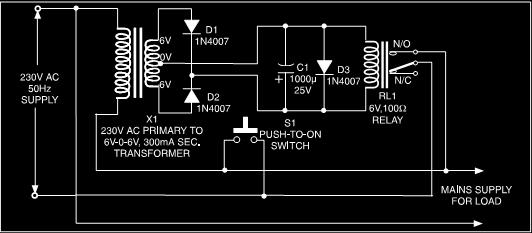
ir sensors from scratch line follower
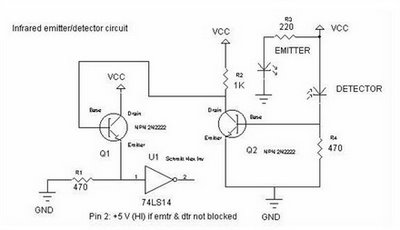
To achieve an optimal voltage swing, the resistance value of R1 must be selected with precision. The sensor resistance, Rsensor, equals a when there is no light exposure and b when light is present. The voltage difference between these two states is significant: a high resistance in the absence of light and a much lower resistance when light is detected. This characteristic of the sensor is utilized to create a potential divider circuit. The voltage at point 2' is calculated as Rsensor / (Rsensor + R1). Furthermore, an effective sensor circuit should maximize the potential change at point 2' between the no-light and bright-light conditions. This aspect is crucial if an Analog-to-Digital Converter (ADC) is intended to replace the comparator.
To design a sensor circuit that effectively utilizes the potential divider principle, it is essential to consider the relationship between the sensor resistance and the chosen resistor R1. The potential divider configuration allows the voltage output to vary significantly based on the light conditions, which is critical for applications requiring precise light detection.
In this setup, Rsensor will vary between two distinct values: Rsensor = a (high resistance) when no light is detected and Rsensor = b (low resistance) when exposed to light. The output voltage at point 2', derived from the voltage divider formula, can be expressed as:
Vout = (Rsensor / (Rsensor + R1)) * Vin
Where Vin is the input voltage supplied to the divider. When light is present, the lower resistance (b) will yield a higher voltage at point 2', while the higher resistance (a) in darkness will result in a lower voltage.
To optimize the circuit for maximum voltage swing, careful selection of R1 is crucial. It should be chosen to ensure that the output voltage at point 2' demonstrates a significant difference between the two states, allowing for clear differentiation in the ADC readings. This is particularly important in digital applications where accurate light level detection is necessary for proper system functioning.
In summary, the design of this sensor circuit hinges on the proper selection of R1 to maximize the voltage change at point 2' under varying light conditions, ensuring effective performance in applications utilizing ADCs for signal processing.To get a good voltage swing, the value of R1 must be carefully chosen. If Rsensor = a when no light falls on it and Rsensor = b when light falls on it. The difference in the two potentials is: in presence of light and a very large resistance in absence of light. We have used this property of the sensor to form a potential divider. The potential at point 2` is Rsensor / (Rsensor + R1). Again, a good sensor circuit should give maximum change in potential at point 2` for no-light and bright-light conditions. This is especially important if you plan to use an ADC in place of the comparator To get a good voltage swing, the value of R1 must be carefully chosen.
If Rsensor = a when no light falls on it and Rsensor = b when light falls on it. The difference in the two potentials is: 🔗 External reference
To design a sensor circuit that effectively utilizes the potential divider principle, it is essential to consider the relationship between the sensor resistance and the chosen resistor R1. The potential divider configuration allows the voltage output to vary significantly based on the light conditions, which is critical for applications requiring precise light detection.
In this setup, Rsensor will vary between two distinct values: Rsensor = a (high resistance) when no light is detected and Rsensor = b (low resistance) when exposed to light. The output voltage at point 2', derived from the voltage divider formula, can be expressed as:
Vout = (Rsensor / (Rsensor + R1)) * Vin
Where Vin is the input voltage supplied to the divider. When light is present, the lower resistance (b) will yield a higher voltage at point 2', while the higher resistance (a) in darkness will result in a lower voltage.
To optimize the circuit for maximum voltage swing, careful selection of R1 is crucial. It should be chosen to ensure that the output voltage at point 2' demonstrates a significant difference between the two states, allowing for clear differentiation in the ADC readings. This is particularly important in digital applications where accurate light level detection is necessary for proper system functioning.
In summary, the design of this sensor circuit hinges on the proper selection of R1 to maximize the voltage change at point 2' under varying light conditions, ensuring effective performance in applications utilizing ADCs for signal processing.To get a good voltage swing, the value of R1 must be carefully chosen. If Rsensor = a when no light falls on it and Rsensor = b when light falls on it. The difference in the two potentials is: in presence of light and a very large resistance in absence of light. We have used this property of the sensor to form a potential divider. The potential at point 2` is Rsensor / (Rsensor + R1). Again, a good sensor circuit should give maximum change in potential at point 2` for no-light and bright-light conditions. This is especially important if you plan to use an ADC in place of the comparator To get a good voltage swing, the value of R1 must be carefully chosen.
If Rsensor = a when no light falls on it and Rsensor = b when light falls on it. The difference in the two potentials is: 🔗 External reference

